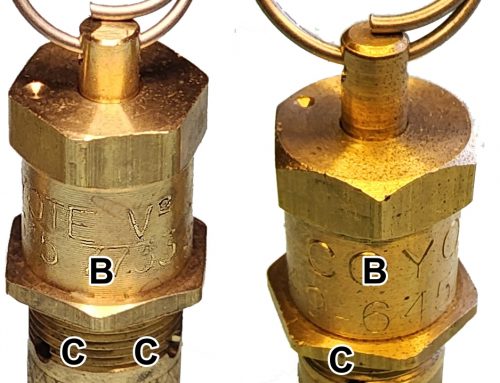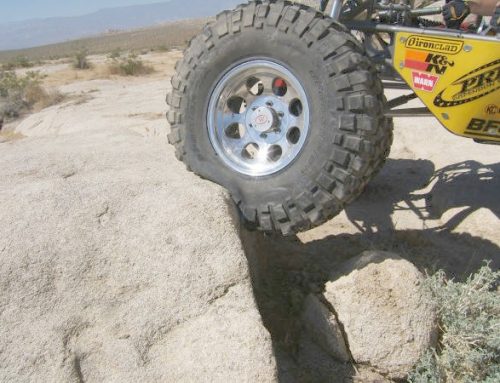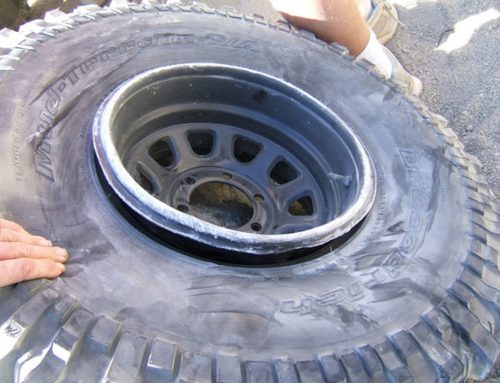COMPENSATING TIRE PRESSURE READINGS FOR ELEVATION
This may come as a bit of a surprise to some and old hat for others, but your tire pressure gauge readings vary with elevation. However, elevation does not change the tire size or the amount of air within. Temperature also affects pressure. See our Temperature and Tire Pressure article for more on that. What follows assumes no temperature change.
That’s right; the 10 PSI(G) you read at sea level is not the same as the 10 PSI(G) you measure at 7,000 feet. The air pressure geeks refer to this as “gauge” pressure. You may also see it as PSIG, with the G indicating it is “gauge” pressure. PSIG references barometric pressure and that varies with elevation. The gauge design influences this and it has nothing to do with quality, size, cost or type of gauge movement – Bourdon, bellows, pencil or digital.
The alternative to PSIG is PSIA. The unique design of PSIA gauges neglects barometric pressure. Another way to put it is that PSIA references zero barometric pressure as found in deep space. That means the pressure you read is relative to the same pressure all of the time, regardless of elevation. I would be VERY, VERY surprised if any of you use a PSIA tire pressure gauge! Some NASCAR crews use them. Mine cost 150 bucks!! See this for how gauges are affected by barometric (atmospheric) pressure.
The above will create controversy with some and disbelief with others, but would you believe a quote from Wikipedia to kick things off? “For example, when a car drives up a mountain, the (gauge) tire pressure goes up because atmospheric pressure goes down. The absolute pressure (PSIA) in the tire is essentially unchanged.” See this Wikipedia article, the fifth paragraph down.
I’d like to also add that the footprint is unchanged despite what your gauge reads! This is due to the fact that footprint is determine by the amount of air in the tire, literally the number and temperature of the air molecules within the tire. Here’s another twist to confirm that.
Most newer TPMSs (Tire Pressure Measuring Systems) use a form of PSIA. If your TPMS displays a pressure on your dash you have a “newer” system. The older systems just warned of low tire pressure. Think about it, if your TPMS used PSIG and you live at say 5000 feet elevation, and drove down to sea level, it would warn of low tire pressure (2.47 less PSIG to be exact). Check yours out. I’d like to hear from all of you about how yours works with elevation change – motorcycle or 4-wheel vehicle.
Another way to look at it is at sea level, a PSIA gauge connected to nothing, an open air chuck, would read 14.7 PSIA. That’s standard atmospheric pressure at sea level. Barometers display PSIA and hence read the actual atmospheric pressure. BTW, atmospheric pressure varies with weather, but 14.7 PSI is a “standard” for discussion.
This graphic shows that it has to do with gravity pulling on all of the air above. In essence, that’s the weight of a one square inch column of air up to the Kármán line, the scientific arbitrary limit of our atmosphere. The lower the elevation, the more air above and hence the higher the atmospheric pressure.
To use the tire pressure calculator below and paint a practical, tire pressure measuring picture, follow along. First, let’s establish a baseline for comparison at any elevation you want to wheel. I’ll use one of my favorite places, the Truckhaven Hills near Salton Sea, California. My preferred, hard going tire pressure is 10 PSIG. I’ll use sea level, 0 feet but be aware the area’s elevation varies from about 236 feet below sea level to about 500’ above (Salton_Sea).
So, the question is, what gauge pressure should I use when airing down in Ouray, Colorado at 7,792 feet – my sea level10 PSIG or Ouray’s10 PSIG reading? BTW, Truckhaven is where Tierra Del Sol is held, an event worth attending.
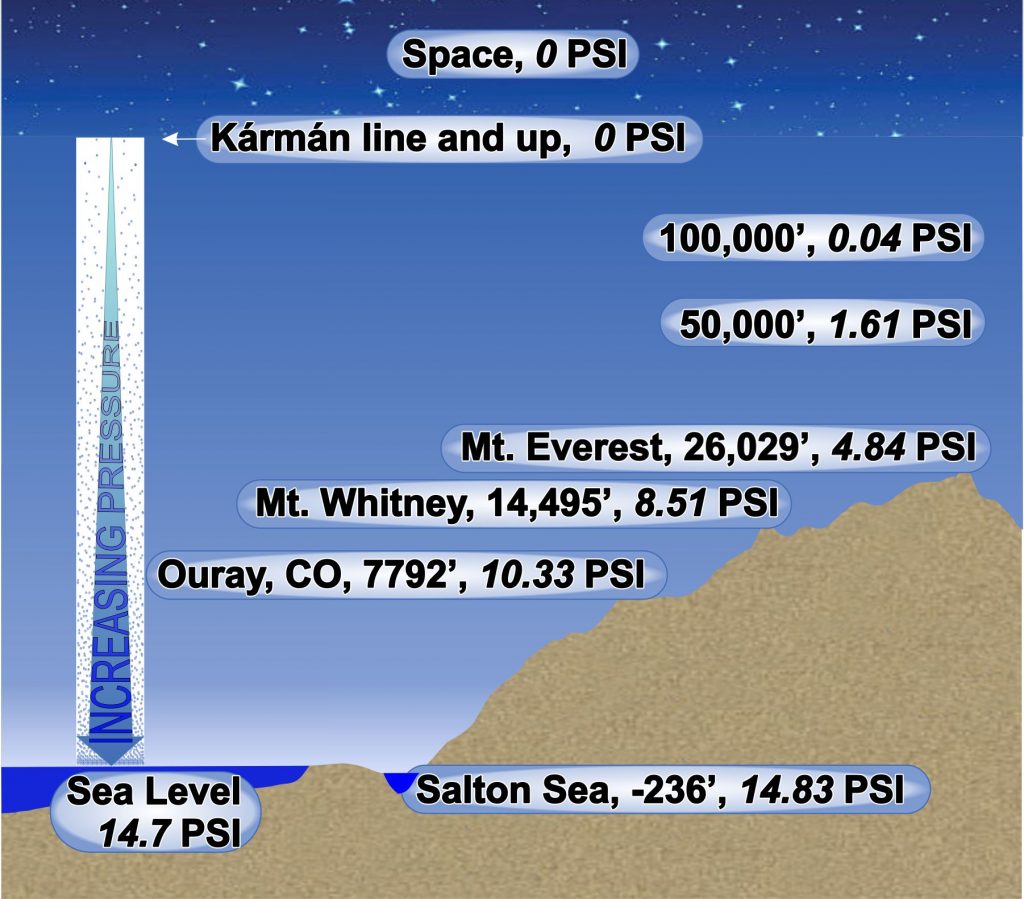
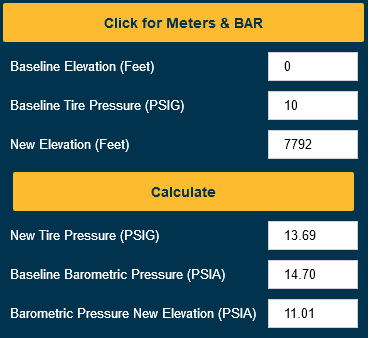
At the bottom of this article, I offer an app of a sort to calculate what tire pressure to air down to at your new elevation. With that, it calculates your baseline 10 PSIG footprint pressure to measure at any elevation.
So again, I want to use my Truckhaven-preferred, 10 PSIG footprint. What pressure do I air down to in Ouray, CO at 7,792 foot elevation?
First, you choose your units (Imperial or Metric) by clicking “CLICK FOR”. This toggles the units between the two. Now, enter all of your data and then press “CALCULATE”. It now looks like this. Notice that I also offer the barometric pressure for both the Baseline and New elevations. My intent with this is to give you some kind of confidence that this is not just scientific hocus pocus, but real world stuff.
Calculate Pressure Change at Elevation
SUMMARY: Click CLICK FOR” to choose Imperial or Metric units. Enter your data above the “CALCULATE” bar and then click it. Your new tire pressure and the barometric pressure for the old and new elevations are displayed below the bar.

